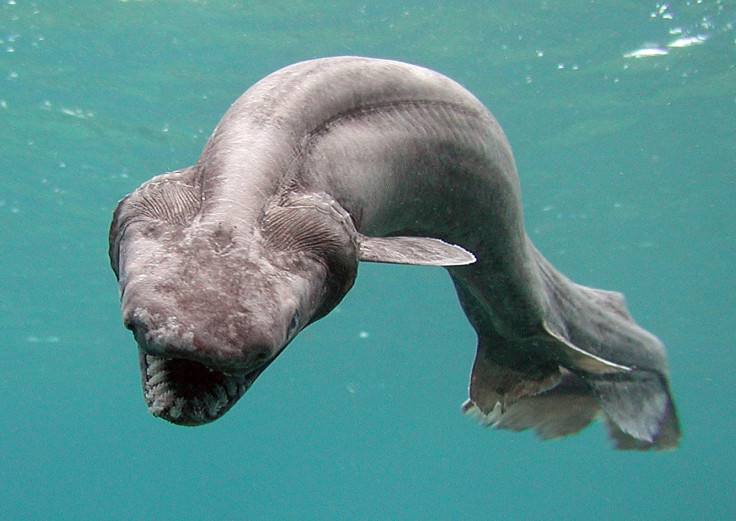Terrifying Ancient Shark That Shared The Earth With Dinosaurs Caught Off Portugal

It is not every day that we find a species from the prehistoric era still swimming in our oceans. And that too one that probably has sent the minds of many a tired and frightened sailor into wild trips of sweat-soaked imagination for centuries.
So one can imagine the surprise that researchers from Portugal's Institute for the Sea and Atmosphere were in for when they caught a frilled shark (Chlamydoselachus anguineus) recently. The scientists called it a "snake-like shark" — a member of a species that has been living on earth from 80 million years ago.
It was a case of scientific serendipity. The researchers were not looking for the shark, or any "living fossils" for that matter. They were working on a project to minimize unwanted catches in commercial fishing, the BBC reported quoting Sic Noticias TV.
The dinosaur-era shark, a male, was pulled into a fishing trawler from a depth of 700 meters (2,300 feet) and measured 1.5 meters (4.92 feet) long. Japanese studies have previously shown that the frilled shark lived deep down in the ocean, in depths of 100 to 1,300 meters, and rarely came up on the surface.
The shark gets its name from six pairs of collar-like gills with frilly edges. Perhaps unique among the shark species, its first gill slit continues across the throat. The jaws are at the end of the head, rather than underneath as in most sharks. It has trident-shaped, backward-facing teeth, 300 of them distributed in 25 rows. These teeth allow it "to trap squid, fish and other sharks in sudden lunges," according to Professor Margarida Castro of the University of the Algarve. The teeth, and the spines that line its mouth, give the shark a terrifying look. Let's forgive those old salts!
Some 61 percent of the frilled shark’s diet consists of cephalopods — animals like squids and octopuses, probably because there aren't many other fish living in the dark depths it is usually found in. The shark can grow up to 2 meters and has the longest gestation period for any animal - 42 months. Again because of the cold in those depths, which slows down metabolic processes.
The term "living fossils" was first used by Charles Darwin to describe living beings that have remained largely unchanged for millions of years — mostly because they have settled themselves in environmental niches that don't challenge them to evolve. Scientists say the frilled shark never evolved from the era when dinosaurs stomped the earth because of its nutrient-poor deep-sea habitat.
The species was first described by Samuel Garman in 1884, and he had said that sailors' stories about sea monsters could have been inspired by this shark's eel-like movements. But German ichthyologist Ludwig H.P. Döderlein, who taught at Tokyo University in the late 1800s had brougth to Vienna two specimens captured in Tokyo Bay. But his paper on them was lost.
The Independent reported that although some scientists accidentally cut their fingers while examining the teeth of the shark, it does not pose a danger to humans because it is rarely seen live.
This is what Harman had to say of the frilled's teeth: “The teeth are constructed for grasping and from their peculiar shape and sharpness it would seem as if nothing that once came within their reach could escape them. Even in the dead specimen the formidable three-pronged teeth make the mouth a troublesome one to explore.”
The frilled shark is found in the Atlantic, and in the Pacific around the coasts of Australia, New Zealand, and Japan. They are thought to live near to large islands and there have been some reports of their sighting in the open ocean.
Well, the frilled is not the only fish that has the honor to be called a 'living fossil.' The elephant sharks (Callorhinchus mili), although not a shark but a member of the branch of cartilaginous fish known as chimaeras, have hardly changed for 420 million years, genome mapping studies have showed.
How old is that? The dinosaurs, with who the frilled shared the earth, did not emerge till some 230 million years ago. That makes the elephant shark the slowest-evolving vertebrate known to man!
© Copyright IBTimes 2024. All rights reserved.











